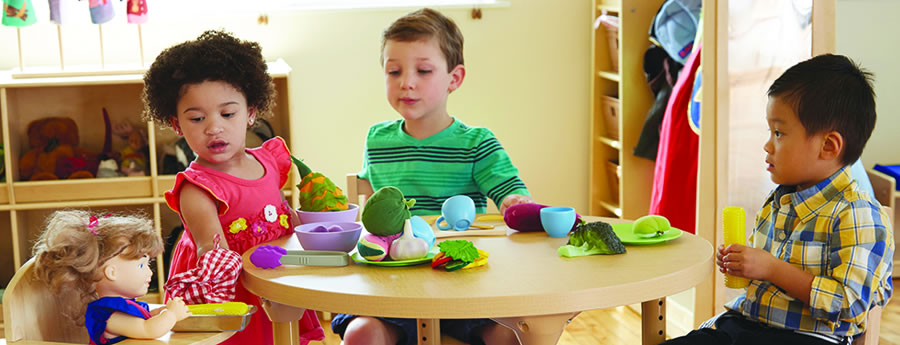As soon as your children can walk and talk, their imagination’s soar to unbelievable limits. In some ways, they are even more creative than the adults! Even though they’ve seen so little of the world, every event they encounter has a lasting effect on their mind. If they see someone in the kitchen they want to cook their own meal. The simple act of being a parent can inspire some kids to want to take on responsibility and take care of their own. Its really amazing how much children can consciously or unconsciously pick up habits, mannerisms and techniques.
Nothing is better than being able to be there in the moment, to push their creativity to new heights and create forever moments. To put yourself in their world can mean the world for the child and the amount of bonding cannot be quantified. Now, just like children’s creativity, there are infinite amount of ways you can connect to your kid. In this article we will be talking about how you can use dramatic play to not only be fun, but also be a learning experience. Hopefully this will spark a little bit of creativity on your part and be a kid for a little bit too!
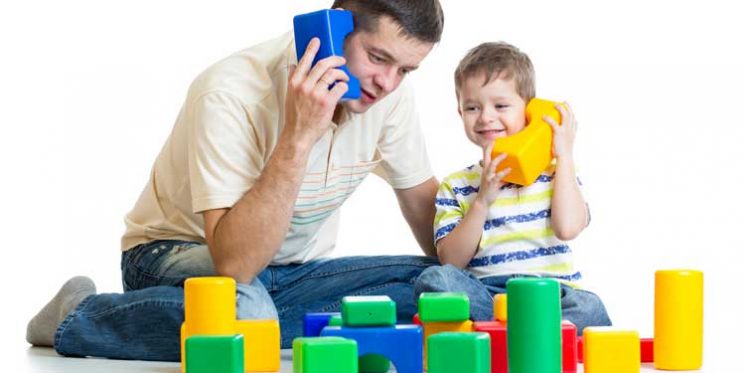
Why it is beneficial
What is dramatic play and why is it beneficial? Dramatic play is the action of acting out scenarios with children using only toys and minimal props. It is a way to connect the real world with the pretend world, in a safe and healthy way. With kids glued to their ipads more than we would like, dramatic play is even more necessary. First, its interactive. Children are up and about, usually running around grabbing toys and interacting with their environment. Children can use toys to communicate their thoughts and describe what they are seeing. There’s a sense of responsibility that is born as dramatic play is utilized. All other times its usually the parents telling what the kid to do; now they have all the authority! Being interactive means being physically active. Picking items up and down, running around or organizing items works on overlooked characteristics like dexterity.
Dramatic play can also teach children social behaviors such as manners or organization. What’s better than combining play fun with useful habits? If you are in a creative session with your child, as the scene plays out, suggest mini clean up tasks. No one likes to clean up a big mess when they are tired. Mini clean ups as the session progresses teaches responsibilities and translates into real life scenarios.
Dolls/Figurines
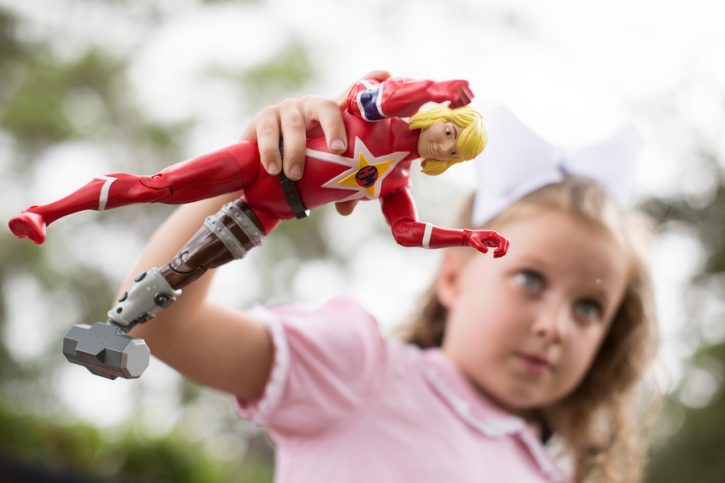
You probably already have some form of dolls or action figurines in your house and that’s great. No need to purchase any extra! The next time the dolls come into a play time, time to turn on dramatic play. An easy way to switch on the creative juices is to ask a lot of questions. What’s his [the doll’s] name? What is he doing today? Does he have any appointments today? Is he hungry? These questions can lead to even more questions and ultimately more creativeness. At a certain point instead of questions, you need to lead the scene. Give the doll a voice, a personality or an opinion. Don’t be afraid to lead them in different directions.
Important to note that every kid is different. One kid might not want the doll to go get a haircut, but instead might want to save the world from annihilation. Don’t force unwanted themes and try to go along with what they are thinking. I think every parent can agree that there are certain play scenarios that are concerning. Creative play can lead their minds to a form of pretend violence. Shooting the bad guys, destroying buildings or blowing stuff up are common. Don’t be reactive and try to change the scene completely. Plenty of kids, especially boys have action fantasies and isn’t a precursor to future violence. Even better, you can try to instill morals into this type of play. Become the villain and separate out good versus evil. Make it light hearted and fun.
Hide and Seek
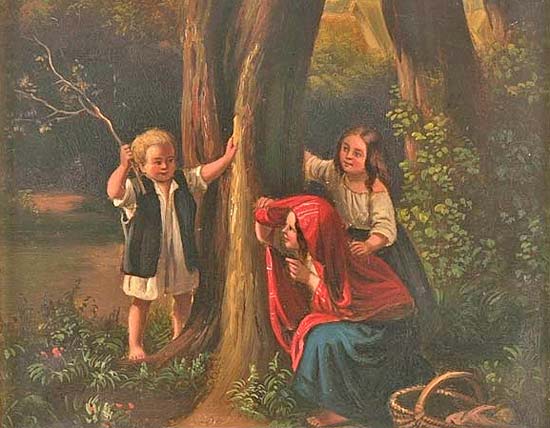
Another fun game to play, one person is the seeker while the other person hides. It’s a simple game but requires a lot of creativity on both sides. If your child is the one hiding, they have to have spatial awareness and think of their surroundings. This is called the concept of the volume. It gives your child a task to do and you would be surprised on the places they can fit in. Not only is hide and seek fun, it teaches them that things can still exist even though they cannot see them. There’s also social aspects to any kid’s game; you have to take turns, work in teams or deal with a conflict between players. Furthermore, don’t discount the physical aspects. Agility, balance, coordination and trying to stay silent can teach valuable skills.
Pretend Play Kitchen
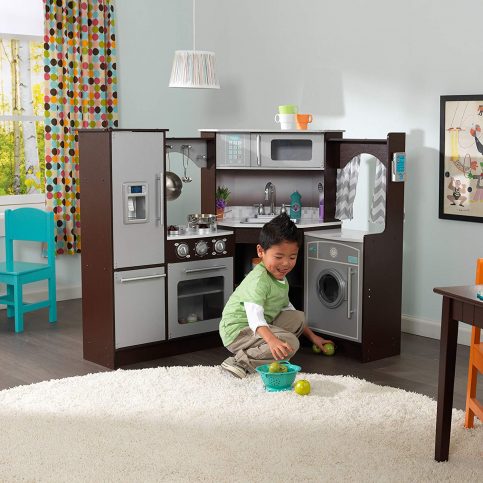
If your kid has an affinity for cooking, but too young to actually be useful in the kitchen, you might consider buying a pretend play kitchen set. It is a bit of an investment, but play kitchens last years and can be a great addition to dramatic play. There’s so many things you can do with a kitchen set with your children. Trying to cook a meal requires pots and pans, silverware, pretend food, cooking and plating. Just like how there are numerous meals to cook, you can be just as creative in a play kitchen. Unlike other dramatic play, having a play kitchen can actually teach your kid how to cook. Many playsets include numerous kitchen appliances like a refrigerator, oven, stove and microwave. Some even include a dishwasher or laundry. It seems simple, but this is a perfect opportunity to teach your kid how to use the stove or the oven and the safety precautions. Enforce good habits like pretend washing their hands before handling food or organize the cabinets.
Have them cook a 3 course meal for you and have them prepare the menu. Or say the food category you are interested in and have them serve you. When finished, have them do a wash of the dishes and put them all away in an organized fashion. There are so many ways you can dramatic play with your child.

